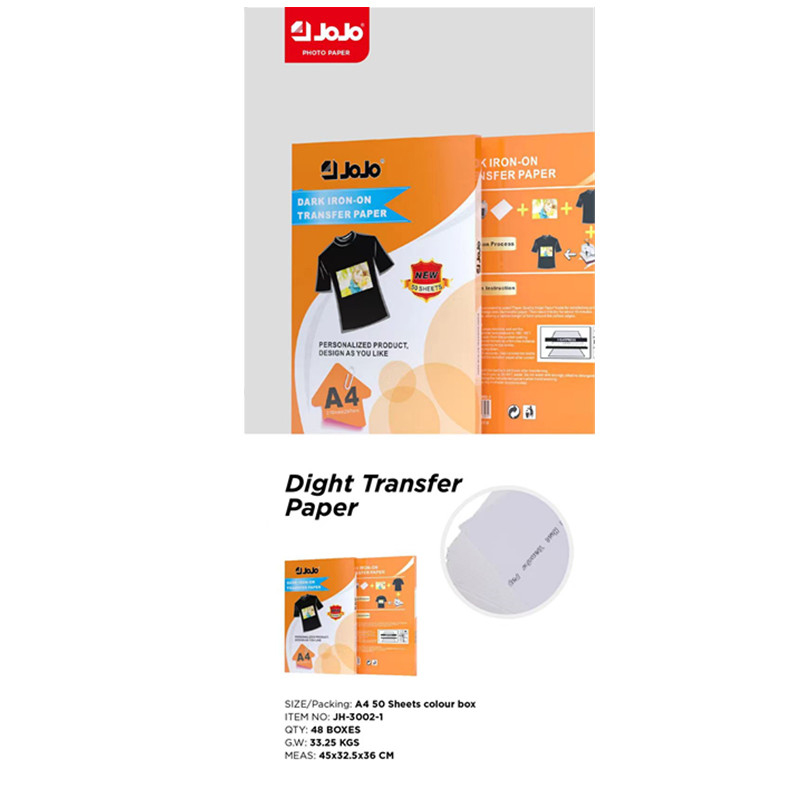If you need any help, please feel free to contact us
Common Mistakes In Heat Transfer Printing And How To Avoid Them
Heat transfer printing is a widely used method for applying images and designs onto various surfaces such as textiles, ceramics, and other materials. While this technique offers versatility and vibrant results, it requires careful attention to detail to avoid common errors that can affect print quality and durability. Understanding the typical mistakes and how to prevent them can save time, materials, and reduce frustration for both beginners and experienced users.

Mistake 1: Using Incompatible Transfer Paper or Photo Paper
One frequent mistake in heat transfer printing is using the wrong type of paper for the intended application. Transfer papers come in various forms, such as sublimation paper, inkjet transfer paper, or photo paper tailored for heat transfer. For instance, using a photo paper 180 gsm that is not designed for heat transfer may result in poor ink release or uneven transfers.
It is important to select transfer paper that matches the printer type, ink type, and substrate material. Stick glossy photo paper and double sided glossy photo paper are examples of papers designed to deliver smooth, shiny finishes and good ink absorption. However, not all glossy photo papers are suitable for heat transfer printing. Papers specifically manufactured for heat transfer have coatings that allow ink to release cleanly during the application process, ensuring crisp images and small residue.
How to Avoid: Verify the specifications of your paper before use. Choose photo paper or transfer paper that explicitly supports heat transfer printing. Testing with a small sample can also help determine suitability.
Mistake 2: Incorrect Printer and Ink Usage
Using an incompatible printer or ink can advance to faded prints, smudging, or poor adherence during the heat transfer process. Inkjet printers require inks that can withstand the heat press without degrading. Dye-based inks, for example, often produce vibrant colors but may lack durability on certain transfer papers.
Choosing the right ink to pair with your photo paper 180 gsm or stick glossy photo paper, is crucial. Incompatible ink-paper combinations may result in images that do not transfer well or fade quickly after washing.
How to Avoid: Use inks recommended for your printer model and ensure they are compatible with your transfer paper. Pigment-based inks generally offer better wash resistance but require compatible paper and printers. Confirm manufacturer guidelines for ink-paper combinations.
Mistake 3: Improper Heat Press Settings
Heat transfer printing involves precise control of temperature, pressure, and time. Applying too much heat or pressure can cause the paper to scorch, colors to distort, or the image to blur. Conversely, insufficient heat or pressure may result in incomplete transfer, causing the design to peel or wash off easily.
When using double sided glossy photo paper or other glossy photo papers, temperature settings may need adjustment since these papers have special coatings that react differently under heat compared to matte or uncoated papers.
How to Avoid: Follow the recommended heat press settings provided with the transfer paper. Conduct test presses on sample pieces to determine the ideal temperature, pressure, and duration for your specific combination of paper, ink, and substrate.
Mistake 4: Neglecting Image Preparation
Another common error is neglecting to prepare the image properly before printing. For heat transfer, images often need to be mirrored or flipped horizontally, especially when printing on transfer papers that require this step to ensure correct orientation on the final product.
Failing to reverse the image results in a backward design once transferred, which can be disappointing and wasteful.
How to Avoid: Always mirror your images before printing on heat transfer paper. More design software and printer drivers offer an option to flip images horizontally — make sure this setting is enabled when required.
Mistake 5: Poor Surface Preparation of the Substrate
Heat transfer printing requires the substrate surface to be clean, smooth, and compatible with the transfer method. Dust, oils, or fabric softeners on textiles can interfere with ink adhesion and advance to blotchy or uneven prints.
Certain materials absorb heat differently, so substrates like polyester blends often produce better transfer results compared to cotton. When working with photo paper 180 gsm or stick glossy photo paper, the substrate’s surface finish impacts the transfer quality as well.
How to Avoid: Clean the surface of the item before transfer and use substrates recommended for the transfer paper type. Avoid washing garments with fabric softeners prior to printing.
Mistake 6: Inadequate Cooling and Peeling Technique
After pressing, peeling the transfer paper too early or too late can damage the design. Some papers require hot peeling, while others recommend waiting for the print to cool completely.
Using double sided glossy photo paper, which may have different peel timing requirements, highlights the importance of following the manufacturer’s instructions carefully.
How to Avoid: Follow the peeling guidelines specified for your transfer paper. Test different peeling times on sample prints to ensure the ideal results without damaging the design.
Heat transfer printing combines technology and materials science to create high-quality printed items, but avoiding common mistakes is key to success. Selecting the right transfer paper, such as photo paper 180 gsm, stick glossy photo paper, or double sided glossy photo paper, matched with compatible inks and substrates, forms the foundation of good results.
Understanding your heat press settings, preparing images correctly, and handling substrates properly also play critical roles in the final quality and durability of prints. With attention to detail and proper procedures, heat transfer printing can produce attractive, long-lasting designs across a variety of materials.

 English
English Español
Español 中文简体
中文简体 Português
Português

